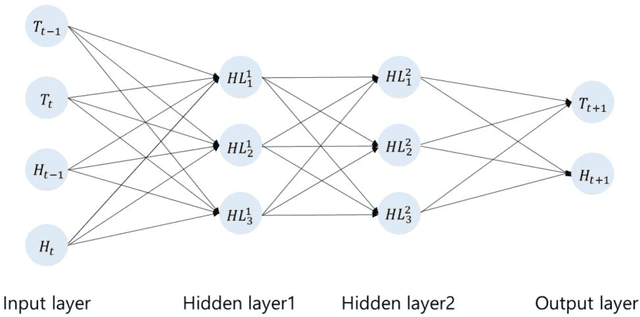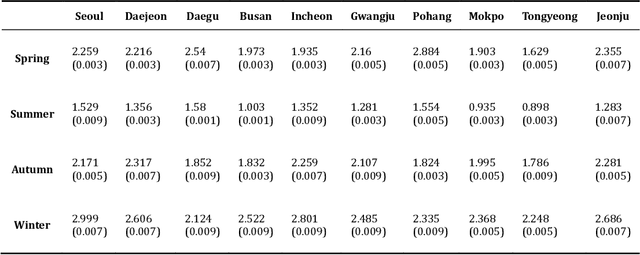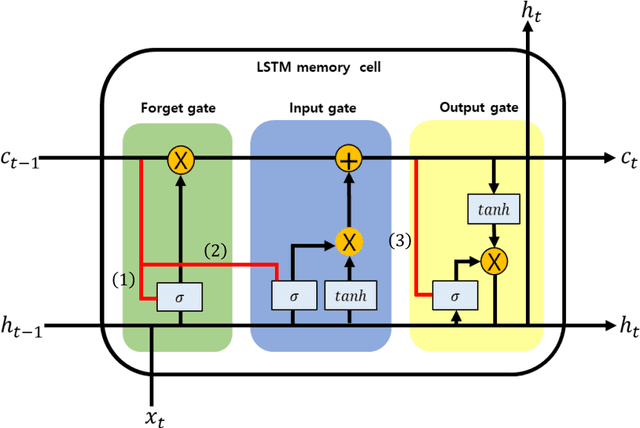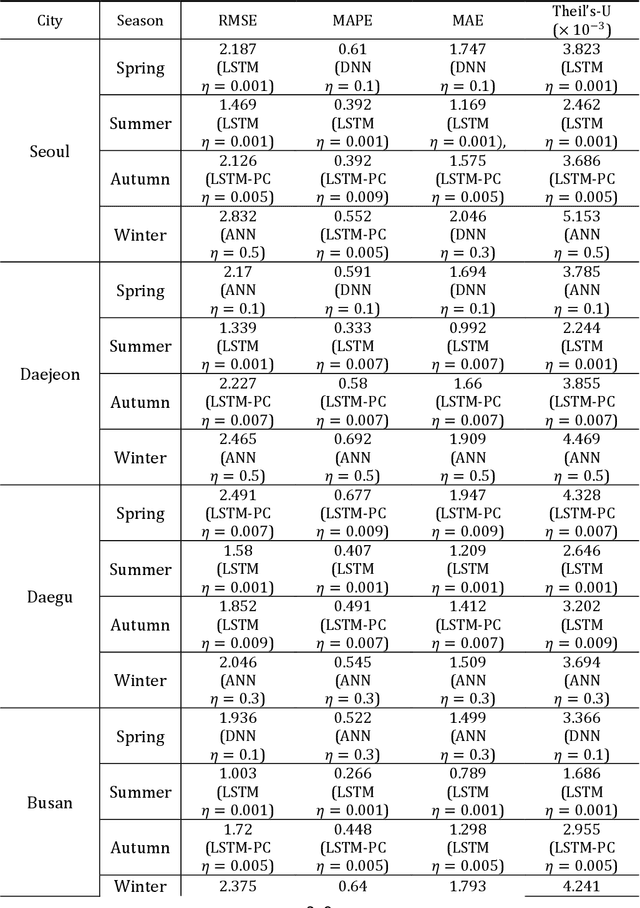Woon Seon Jung
Dynamical prediction of two meteorological factors using the deep neural network and the long short term memory $$
Jan 16, 2021



Abstract:It is important to calculate and analyze temperature and humidity prediction accuracies among quantitative meteorological forecasting. This study manipulates the extant neural network methods to foster the predictive accuracy. To achieve such tasks, we analyze and explore the predictive accuracy and performance in the neural networks using two combined meteorological factors (temperature and humidity). Simulated studies are performed by applying the artificial neural network (ANN), deep neural network (DNN), extreme learning machine (ELM), long short-term memory (LSTM), and long short-term memory with peephole connections (LSTM-PC) machine learning methods, and the accurate prediction value are compared to that obtained from each other methods. Data are extracted from low frequency time-series of ten metropolitan cities of South Korea from March 2014 to February 2020 to validate our observations. To test the robustness of methods, the error of LSTM is found to outperform that of the other four methods in predictive accuracy. Particularly, as testing results, the temperature prediction of LSTM in summer in Tongyeong has a root mean squared error (RMSE) value of 0.866 lower than that of other neural network methods, while the mean absolute percentage error (MAPE) value of LSTM for humidity prediction is 5.525 in summer in Mokpo, significantly better than other metropolitan cities.
 Add to Chrome
Add to Chrome Add to Firefox
Add to Firefox Add to Edge
Add to Edge